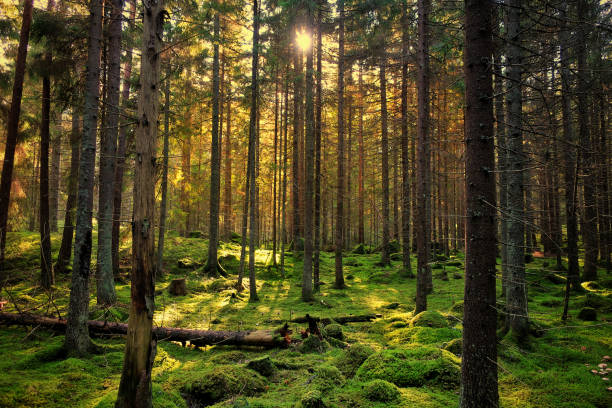
Did you ever walk in a forest and wonder how the trees grew so large without fertilizer and irrigation? This is a task I urge you to do. The future of our existence and our children and grandchildren depend upon it. The world and its plants will somehow continue without us. They have the ability to adapt and believe it or not to feed themselves and store water, but do we have the ability to feed ourselves, protect the atmosphere, and conserve the water we need for ourselves and our children?
We do, if we learn from the plants.
A tree grows and pulls up nutrients from deep in the ground. In the winter the leaves drop, the cold kills the green vegetation growing in the shade of the tree, their roots covered with fungus. The micro organisms in the earth turn the waste on the ground into humus, a powerful fertilizer with the capacity to store great quantities of water. The mighty tree shades the soil and conserves water, it absorbs CO2 and turns it into leaves. The leaves drop the carbon to the soil where microbes and fungi turn it into humus. A powerful way to sequester carbon.
Can we grow beautiful plants with organic fertilizer? Yes, and it is very much a better alternative to commercial fertilizer, but it still has a carbon footprint. By using leaves and paper and cardboard we can build humus and reduce our carbon footprint. By mulching with green plant material we can add the nitrogen needed to improve the soil and by mulching with old wood chips or straw we can retain moisture in the soil as well as protect the microbes and fungi necessary to complete the cycle.
Tilling the soil will provide the plants with an immediate release of nutrients, similar to turning a compost pile and adding air. The process of breaking down the soil structure increases decomposition and releases nutrients, but it inhibits the formation of humus, and the growth of fungi. Scientists are only just beginning to learn the role and importance of fungi in the soil.
There are projects all over the world where people are greening the deserts using the principles of regenerative gardening gleaned from watching the trees and learning from nature so we can use these principles to save our future and the future of our children.









